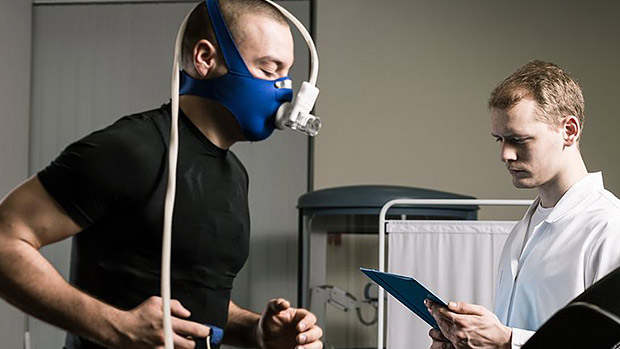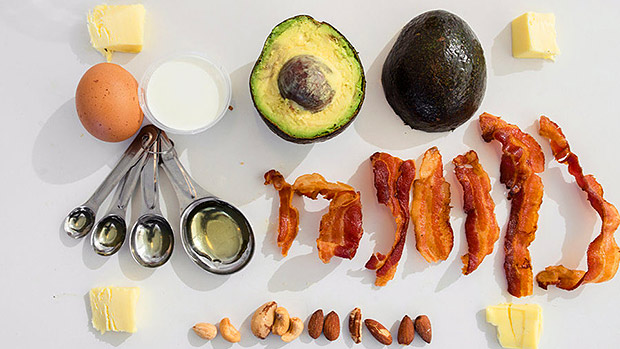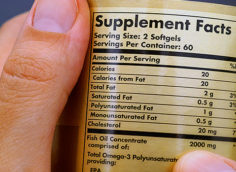The aversion that most lifters have for low-carb zealotry is well deserved. This latest generation of keto gurus carries all the trademark signs of the worst kind of idiocy. But is it all bad? I mean, if Navy SEALs are doing it and Dr. Oz is talking about it, there's gotta be something there right?
All jokes aside, we do need to make sure we aren't throwing the baby out with the bathwater by writing off an entire body of research. But the biggest problem with keto is that many of those pushing it haven't done their homework.
Let's delve past the gurus to look at one of the most important recent studies done on the benefits of fat-adaptation for athletes. The study, Metabolic Characteristics of Keto-Adapted Ultra Endurance Runners by Jeff S. Volek and his team was important, but it was also one of the most misunderstood sports nutrition studies over the past few years.
It's important because it demonstrates the benefits of fat adaptation for athletes in a randomized control trial using human subjects. It's misunderstood because most keto gurus who quote it never read past the abstract.
In the study, researchers split 20 ultra-endurance athletes into two different groups. Ten athletes were told to eat a low carbohydrate, high fat (LCHF) diet consisting of 10% calories from carbs, 19% from protein, and 70% from fat. The other ten athletes ate a "traditional" high carb, low fat (HCLF) diet of 59% carbs, 14% from protein, and 25% from fats.
After an average of 20 months adhering to these diets, the athletes were brought into the lab for physical trials. The first was a VO2 max test where fat and carbohydrate oxidation rates were calculated using indirect calorimetry. The second trial was a three-hour run done at 64% of VO2 max for each athlete on the day following the initial VO2 max test.
Once the three-hour run started, the athletes were only allowed to consume water. Blood samples were taken at the 60 and 120 minute marks, heart rate and rate of perceived exertion every 30 minutes, and indirect calorimetry measured for 10 minutes at the 50-60, 110-120, 140-150, and 170-180 minute marks.
When the trial ended, another blood sample was immediately taken, followed by a second muscle biopsy 15 minutes after the trial. Indirect calorimetry measures were taken again at 30, 60, and 120 minutes post-exercise with yet another muscle biopsy done at 120 minutes post exercise.

So now that we know how these athletes got stabbed, poked, prodded, and tortured, let's see what their sacrifice gave us as far as results:
- The LCHF athletes oxidized fat during both the VO2 max trial and the submaximal run trial at double the rate of the HCLF athletes.
- The LCHF athletes had a greater capacity to oxidize fat at higher percentages of their maximal aerobic capacities than the HCLF athletes. Peak fat oxidation occurred at 70.3% on average for LCHF athletes versus 54.9% for HCLF athletes.
- Most astoundingly, the LCHF athletes had virtually no differences from the HCLF athletes in concentrations of pre-exercise muscle glycogen concentrations, rates of glycogen utilization during exercise, or rates of glycogen synthesis during recovery despite habitually consuming six times less carbohydrates than the HCLF athletes for the weeks leading up to the trial.
So let's address the elephant in the room. The subjects in this study are endurance athletes. Why should anyone who wants to build muscle and get stronger be concerned with any of this?
Because it sheds light on a potential solution to one of the most perplexing paradoxes that bodybuilders and strength athletes have faced throughout time: how to get leaner while preserving as much muscle and strength as possible.
When carb-fueled strength athletes seek to burn body fat, they typically reduce their overall caloric intake by consuming less carbs and fat while maintaining or increasing their protein intake. Unless athletes are fat adapted (burning ketones for fuel rather than glucose), however, this does not reduce dependence on glucose while performing the physical activity needed to burn that fat off.
To make up for this energy deficit, the body needs to find fuel somewhere. To generate glucose, cortisol release stimulates gluconeogenesis, whereby amino acids get converted into glucose via the liver. Those amino acids can come from ingested protein or from muscle catabolism. Either way, in a lower carb but non-fat adapted state, you're potentially misusing the protein that you're eating or, even worse, you might be breaking down precious muscle mass.
What Volek's study demonstrates is that, rather than depleting athletes' glycogen levels, fat adaptation allows them to become far more efficient at utilizing glycogen. Increased access to fat as fuel leads to less dependence on glycogen and less potential muscle catabolism.
Placed in the context of other studies that demonstrate superior muscle retention on the keto diet over traditional diets, there's a pretty good case for fat adaptation as a way for strength athletes to lean out while preserving strength and muscle.
But the real question is: What should a low carb diet for lifters and athletes really look like?
When you delve into the deepest, darkest corners of the current keto trend, you hear lots of really poor understandings of what constitutes a proper low carb diet for athletes, along with enough bad advice to make you wonder how these people ever made it to adulthood.
Dumb things like:
- Avoid vegetables because they've got carbs and can kick you out of ketosis.
- You never need carbs when you're keto adapted, no matter what your activity levels are. Your daily total carb intake must be below 30 grams!
- You don't need as much protein on the keto diet, and eating more than 0.8 grams per pound of bodyweight could get you kicked out of ketosis.
This stuff rightfully scares the crap out of anyone whose fitness goals are loftier than doing Zumba without dry heaving.
The truth is that most of these "keto experts" confuse the therapeutic use of the keto diet to fight diseases like cancer (which does need to be strict) and keto advice for couch potatoes (which should still be strict) with advice for athletes and serious lifters (who need some metabolic flexibility).
But this study wasn't written on someone's "Keto is Cool" blog. This was done by Dr. Jeff Volek, who literally wrote the book on Low Carb Dieting for Athletes. This guy's no dummy.
So when you actually look beyond the macronutrient percentages and at the actual numbers of macros these athletes were eating, or care enough to read more of the study than the abstract, a much more sensible approach emerges.

During their habitual diets leading up to the trial, the low-carb athletes were eating an average of 226 grams of fat, 82 grams of carbohydrate, and 139 grams of protein.
The protein might look low to you, but remember that these are endurance athletes we're talking about. The average bodyweight amongst the low-carb athletes was 152 pounds with an average lean body mass of 130 pounds.
So they were actually consuming 2.1 grams of protein per kilogram of bodyweight per day or 2.3 grams of protein per kilogram of lean body mass. That's 0.9 grams of protein per pound of bodyweight or 1.1 grams of protein per pound of lean body mass.
The latest research on the question of how much protein lifters need in order to build muscle and strength stated that 1.62 grams of protein per kilogram of bodyweight per day was the point of maximum benefit. These ketotic athletes were, on average, exceeding that number every day during their habitual diets leading up to the trial.
Wait a minute. These athletes were consuming 2.1 grams per kg of their bodyweight and they weren't getting kicked out of ketosis? You heard that correctly, keto queen.
Newsflash: A properly formulated ketogenic diet for athletes is NOT a low or moderate-protein diet. That's a complete myth that every non-athletic keto guru loves to perpetuate.
Protein is, in fact, the most important nutrient to get right on a keto diet for athletes. If it's too low, performance and strength goes out the window. If it's too high, you'll get kicked out of ketosis. Nevertheless, you can most certainly eat enough protein to build muscle on a keto diet while still enjoying the benefits of fat adaptation.
So everyone knows that if you exceed 30 grams of carbs a day on the keto diet you'll get kicked out of ketosis and spark off a cascade of events inside of your body that'll eventually lead to you becoming obese, diabetic, and pooping in oversized diapers.
I wonder if these low-carb athletes realized that Dr. Volek was trying to kill them when he had them eating an average of 82 grams of carbs a day? Or could it be that some people need more carbs than others, and that some athletes could eat more carbs than others and still remain in ketosis?
Actually, Volek and Phinney cover this in their book, The Art and Science of Low Carbohydrate Performance, albeit in a single short sentence. They explain that 50 grams of carbs or less per day is a good target to remain in ketosis, but that "...some people may need to stay under 30 grams while others can consume as much as 100 grams per day of total carbs and still remain in nutritional ketosis."
When they wrote this book, Volek and Phinney left the door open for overly zealous interpretations of what should be a highly variable and case dependent recommendation.
So let's put this in perspective. If you're a 60 year old overweight pre-diabetic man with minimal physical activity who wants to lose weight on keto, your limit of carbs is probably going to be closer to that 30 gram mark. If you're an athlete who's lifting weights, doing high intensity exercise, and carrying a decent amount of muscle, that number will probably be closer to 100 grams.
As Dr. Mike Roussell and Chris Shugart noted in their One Hundred Gram Carb Cure, 100 grams of carbs is actually a perfect number because it's "low enough that you'll be preferentially stoking your metabolic furnace with stored and dietary fats and not carbs. Also, most people won't experience any mental fogginess, crabbiness, or lack of energy that often accompany really low-carb diets."
It also leaves the door open for consuming enough vegetables and berry fruits to cover your micro-nutritional needs while leaving enough room for peri-workout carbs.
If you're an athlete doing a keto diet, the goal shouldn't be just to get your blood ketones up to a certain threshold. Rather, the goal should be to leverage increased ketone production for better performance while burning fat and building muscle. This means that your physical demands will require more protein and more carbs than your average keto dieter.
So while the "less than 30 grams of carbs a day" and low-protein approach should be avoided, you could still potentially benefit from fat adaptation with far less extreme measures than the popular version of the keto diet.
- Volek et al. "Metabolic Characteristics of Keto Adapted Ultra-Endurance Runners."
- Berg et al. Biochemistry 5th edition.
- Manninen, A. "Very Low Carbohydrate Diets and the Preservation of Muscle Mass."
- Morton et al. "A Systematic Review, Meta-Analysis, and Meta-Regression of the Effect of Protein Supplementation on Resistance-Training Induced Gains in Muscle Mass and Strength in Healthy Adults."
- Volek and Phinney. The Art and Science of Low Carbohydrate Performance. pg 67 and pg 65.





